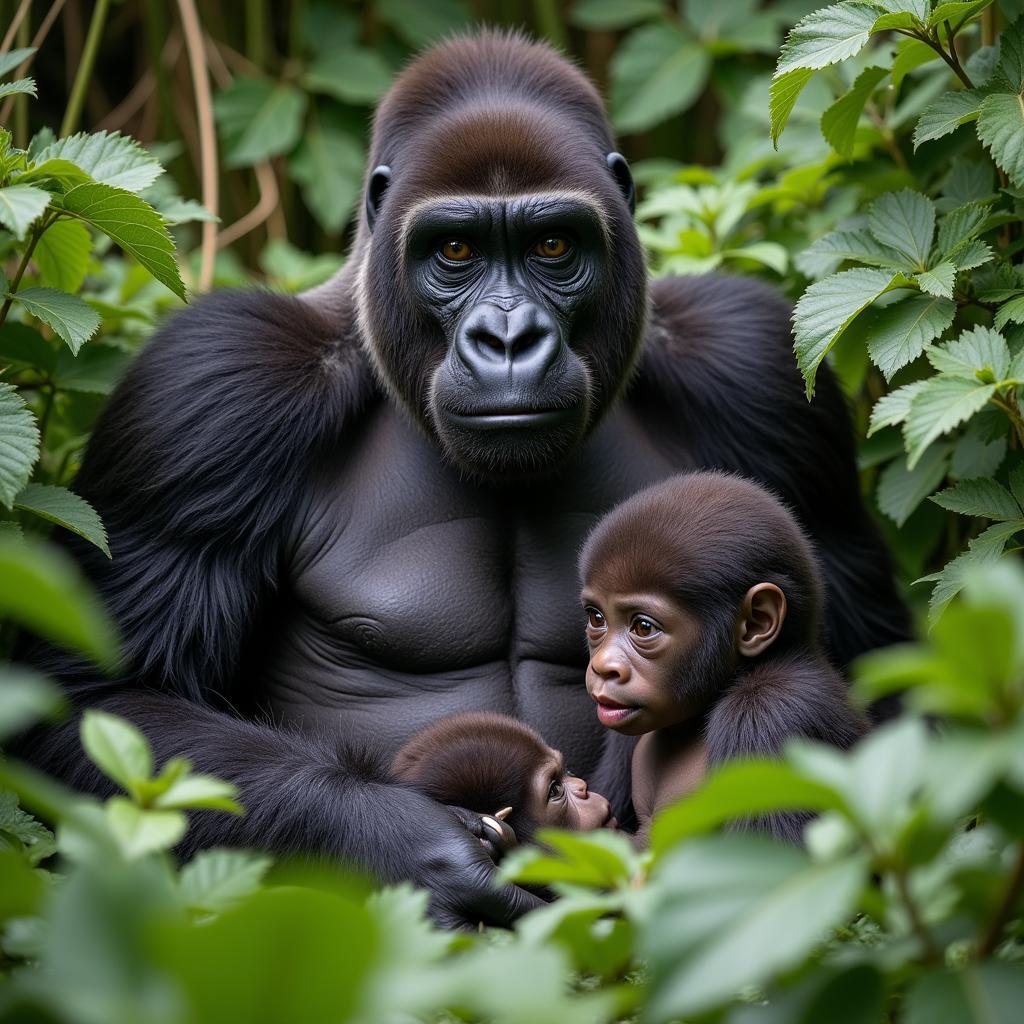Captivating African Baboon Pictures: A Glimpse into Primate Life
African Baboon Pictures offer a fascinating window into the complex social lives and diverse habitats of these intelligent primates. From their distinctive physical features to their intricate troop dynamics, baboons are a captivating subject for photographers and nature enthusiasts alike. This article delves into the world of African baboons, exploring their different species, behaviors, and the challenges they face in the wild. See some amazing african animals images hd.
Unveiling the Diversity of African Baboons
Africa is home to several baboon species, each with unique characteristics and adaptations. The most common species include the olive baboon, the yellow baboon, the hamadryas baboon, and the Guinea baboon. These species vary in size, coloration, and social structure, reflecting the diverse environments they inhabit.
Olive baboons, known for their olive-brown fur, are widely distributed across sub-Saharan Africa. They are highly adaptable and thrive in a range of habitats, from savannah woodlands to open grasslands. Yellow baboons, as their name suggests, have yellowish fur and are found in eastern and central Africa. The hamadryas baboon, with its distinctive cape of long hair, inhabits the Horn of Africa and parts of the Arabian Peninsula.
Decoding Baboon Behavior: Social Structures and Communication
Baboons are highly social animals, living in complex troops with intricate hierarchies. Troop size can vary from a few individuals to several hundred, depending on the species and environmental conditions. Dominance hierarchies play a crucial role in baboon society, influencing access to resources such as food and mates. Baboons communicate through a range of vocalizations, facial expressions, and body postures.
Their complex social interactions, including grooming, play fighting, and cooperative hunting, have fascinated researchers for decades. Understanding these intricate dynamics provides insights into primate behavior and evolution. Want to learn more about monkeys? Check out these african monkey images.
The Challenges Faced by African Baboons in a Changing World
Like many wildlife species, African baboons face increasing threats from habitat loss, human encroachment, and climate change. As human populations expand and land is converted for agriculture and development, baboon habitats are fragmented and reduced.
What are the main threats to baboon populations?
Habitat loss, human-wildlife conflict, and disease are the primary threats.
How does climate change affect baboons?
Climate change alters rainfall patterns and vegetation, impacting food availability and increasing competition for resources.
These pressures can lead to increased human-wildlife conflict as baboons raid crops or venture into human settlements in search of food. Conservation efforts are crucial to protect baboon populations and their habitats, ensuring their survival for future generations. Discover the vibrant world of african jungle animals live.
Conclusion: Preserving the Legacy of African Baboons
African baboon pictures not only capture their physical beauty but also offer a glimpse into their complex lives. Understanding their behavior, social structures, and the challenges they face is essential for their conservation. By supporting conservation initiatives and promoting responsible tourism, we can contribute to the preservation of these remarkable primates and their vital role in the African ecosystem. Explore the diverse fauna with these african animals names and pictures.
FAQ
- What do baboons eat? Baboons are omnivores, consuming a variety of foods, including fruits, leaves, insects, and small mammals.
- How long do baboons live? Baboons can live up to 30 years in the wild.
- Are baboons dangerous? While generally not aggressive, baboons can be dangerous if they feel threatened, especially if protecting their young.
- What is the social structure of a baboon troop? Baboon troops have a complex hierarchy, with dominant males and females holding higher social status.
- How can I help protect baboons? Supporting conservation organizations and promoting responsible tourism are key ways to help protect baboons.
- What are some interesting facts about baboons? Baboons are highly intelligent and have been observed using tools in the wild.
- Where can I see baboons in the wild? Several national parks and reserves in Africa offer opportunities to observe baboons in their natural habitat.
Need support? Contact us 24/7: Phone: +255768904061, Email: kaka.mag@gmail.com, or visit us at Mbarali DC Mawindi, Kangaga, Tanzania.



